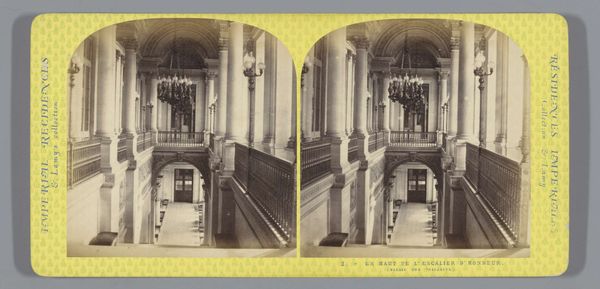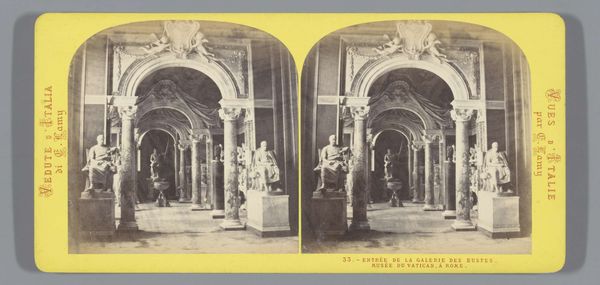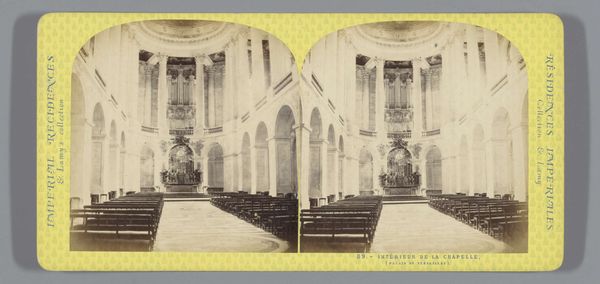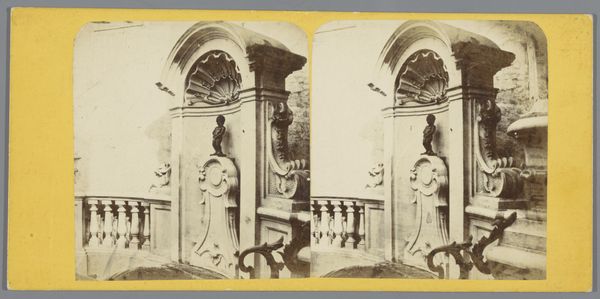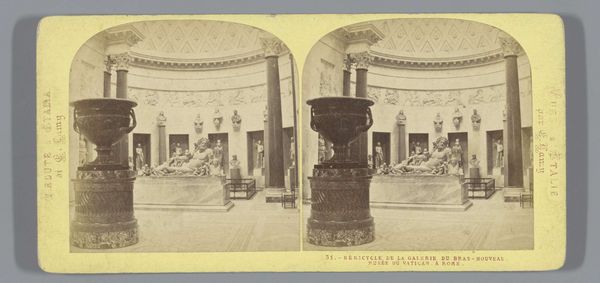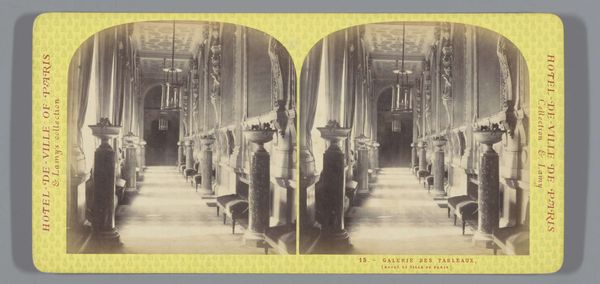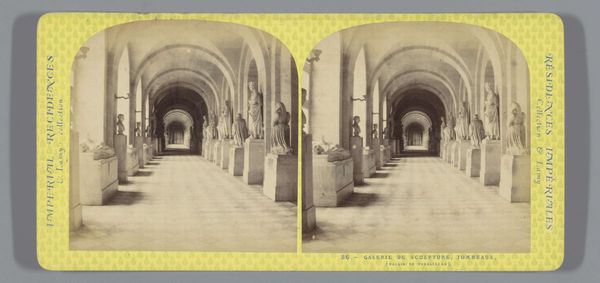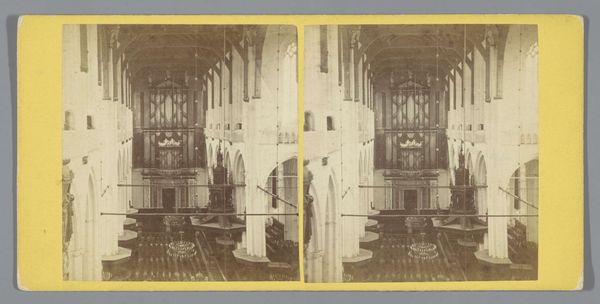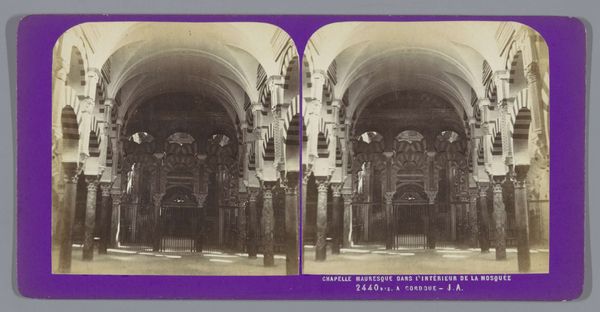
Sculpturen in het trappenhuis van het paleis van Versailles c. 1860 - 1880
0:00
0:00
Dimensions: height 85 mm, width 170 mm
Copyright: Rijks Museum: Open Domain
Editor: So, here we have Ernest Eléonor Pierre Lamy’s albumen print, titled "Sculpturen in het trappenhuis van het paleis van Versailles," dating roughly from 1860 to 1880. It’s quite striking how the photograph captures this grand staircase, lined with sculptures, emphasizing the opulence of Versailles. What stands out to you? Curator: Well, the photograph itself becomes a document of power and its representation. Think about the role of Versailles. It wasn’t just a palace; it was a stage for Louis XIV to project his absolute authority. How do you think this photograph, created much later, reinforces or perhaps even reinterprets that original intention? Editor: I see what you mean. The photographer chooses to highlight the classical sculptures, lending the space a timeless, almost heroic quality. Almost as if to cement that idea of legacy... But wouldn’t the French Revolution complicate this imagery quite significantly, even by 1860? Curator: Exactly! This image is produced after the revolution and multiple shifts in the French government. This classical aesthetic served to legitimize a certain political narrative. It aimed to connect the current rulers with the grandeur and stability—real or imagined—of the past. Look at how the composition leads the eye upward. Do you think it glorifies the past in a particular way? Editor: That upward gaze does feel purposeful. Maybe the photograph participates in a construction of national identity, relying on carefully curated imagery. Curator: Precisely. The image also invites viewers to associate the present with an idealized version of the French past. Ultimately, this is an act of cultural and political affirmation. It prompts the question of who controls the representation and, consequently, the interpretation of history. Editor: This really makes me rethink how photography can function beyond simply documenting reality; it can actively shape perceptions and bolster existing power structures. Curator: And consider the museumification of Versailles itself. Presenting such grand sights serves both aesthetic and political purposes, influencing not only contemporary society, but all of the future. Editor: That's something I'll keep in mind going forward. Thanks so much.
Comments
No comments
Be the first to comment and join the conversation on the ultimate creative platform.
